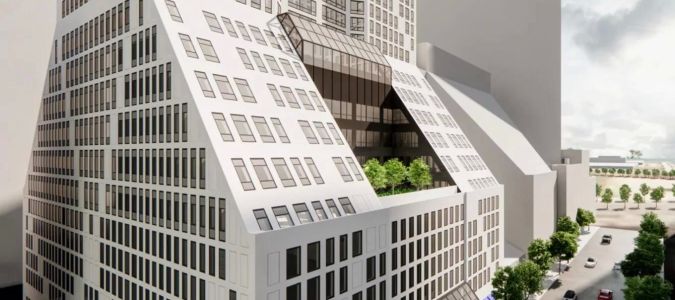How Architects Can Help Reduce Noise Pollution in Building Designs: Effective Strategies
- Understanding the Impact of Noise Pollution
- How Architects Can Address Noise Pollution
- Key Techniques in Acoustic Design
- Case Study: Noise Reduction in a High-Rise Building
- Benefits of Reducing Noise Pollution in Architecture
- Future Trends in Noise Control for Architects
Understanding the Impact of Noise Pollution
As cities become increasingly populated, noise pollution is a growing concern for both residents and businesses. The constant hum of traffic, construction, and other urban activities can have significant effects on people's well-being. As an architect, I’ve seen firsthand how the design of a building can either exacerbate or mitigate these noise challenges. Noise pollution can lead to stress, sleep disturbances, reduced productivity, and even long-term health issues such as hearing loss or cardiovascular problems. Therefore, reducing noise pollution is not just about comfort but also about improving the overall quality of life for inhabitants.
In this article, I will explore how architects can play a critical role in reducing noise pollution through thoughtful design strategies, including the use of soundproofing techniques, acoustic materials, and innovative architectural solutions that minimize the impact of external and internal noise. Let’s dive into some of the most effective ways architects can help address this issue in building design.
How Architects Can Address Noise Pollution
Architects have a profound influence on the acoustics of a building. From choosing the right materials to designing layouts that minimize noise transfer, architects can take several proactive steps to reduce noise pollution. One of the first ways to reduce noise is by considering the location and orientation of the building. For example, positioning a building away from noisy streets or placing noise-sensitive areas such as bedrooms and offices on quieter sides of the structure can make a significant difference in noise levels.
Additionally, architects must consider the materials used in construction. Different materials have varying degrees of soundproofing capabilities. For instance, thick concrete walls or insulated glass windows can act as barriers to external noise, while porous materials like wood or fabric may help absorb sounds inside the building, improving acoustic comfort. I’ve worked on several projects where these design strategies were implemented, resulting in noticeable reductions in both external noise from traffic and internal noise from neighboring units.
Key Techniques in Acoustic Design
When designing buildings with noise reduction in mind, architects rely on several key techniques to manage and control sound. These techniques include:
1. Soundproofing Materials
Soundproofing materials are essential in reducing noise pollution. One of the most common materials used in modern architecture is acoustic insulation, which helps to dampen sound transmission through walls, floors, and ceilings. Materials such as fiberglass, foam, and mineral wool are often used in construction to absorb sound waves. Another popular option is double-glazed windows, which trap air between two panes of glass to reduce the passage of noise from the outside.
2. Acoustic Ceiling and Wall Treatments
Acoustic ceiling tiles and wall panels are commonly used to control sound within buildings. These treatments not only enhance the aesthetics of a space but also absorb sound, reducing reverberation and echo. In many modern office designs, these materials are strategically placed to improve acoustics in open-plan spaces and meeting rooms, making the environment more comfortable for work and communication.
3. Strategic Layout Planning
Another important aspect of noise control in building design is layout planning. Architects can minimize noise disturbances by creating buffer zones between noisy areas and quiet spaces. For example, placing common areas such as kitchens and lounges away from bedrooms or offices can prevent noise disruptions. Additionally, carefully considering the placement of stairwells and elevators can reduce the impact of noise from high-traffic areas.
Case Study: Noise Reduction in a High-Rise Building
In one of my recent projects, we were tasked with designing a high-rise building in a busy urban area. The location was in the heart of the city, surrounded by bustling streets, construction, and constant traffic noise. To address the noise pollution, we used a combination of soundproofing techniques to ensure that the building’s residents would experience minimal disruption from the external environment.
We implemented double-glazed windows, acoustic insulation in the walls, and heavy-duty soundproof doors. Additionally, we designed the building with strategic layout planning, ensuring that the quietest areas of the apartments, such as bedrooms, were positioned on the side of the building facing away from the main road. The result was a significant reduction in noise levels, allowing residents to enjoy a peaceful living environment despite the building’s location in a noisy area.
Benefits of Reducing Noise Pollution in Architecture
Reducing noise pollution in architecture offers several benefits. First and foremost, it improves the overall health and well-being of building occupants. By reducing exposure to noise, architects can help alleviate stress, improve sleep quality, and boost productivity. Additionally, quieter buildings are often seen as more desirable places to live or work, which can increase the property value and appeal of the development.
Another significant benefit of noise reduction is the improvement of social interactions. In residential buildings, reducing noise disturbances between units can help foster a greater sense of community and improve the quality of life for residents. In office spaces, noise reduction contributes to better focus and communication, making the workspace more conducive to collaboration and efficiency.
Future Trends in Noise Control for Architects
As urbanization continues to grow and cities become more densely populated, architects will need to focus even more on noise reduction in their designs. Future trends may include the use of advanced materials like sound-damping composites, smart noise control systems, and innovations in building shapes that naturally deflect sound. With the rise of green building certifications and a growing emphasis on sustainable design, noise control will become an integral part of the overall architectural strategy to create healthier, more livable spaces.
In conclusion, architects have a key role to play in reducing noise pollution through thoughtful design strategies, material choices, and innovative planning. By utilizing these techniques, architects can create quieter, more comfortable environments that benefit the health and well-being of their occupants. If you're interested in learning more about how architecture can address noise pollution or want to discuss specific design strategies, visit 10 Jay Street for expert advice and services on noise control in building design.








